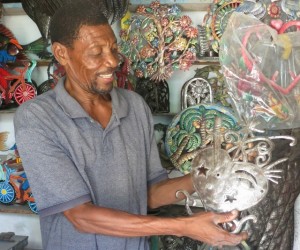Feast of the Virgin of Guadalupe
Tomorrow, in much of North and South America, the Feast of the Virgin of Guadalupe will be celebrated with pilgrimages and fiestas throughout the two continents. It is believed that on that date in 1531, the Mother of God appeared for the second time to Juan Diego, a humble Nahuatl peasant, and gave him the proof that he needed to convince the Spanish Archbishop to build her a temple on Tepeyac Hill in what was to become Mexico City.
The Virgin of Guadalupe is widely embraced as the Mother of the Americas for a number of reasons. She appeared to the indigenous Juan Diego, rather than to the Spanish ruling priests, and spoke to him in his native tongue, saying, “Do you not recognize me? Am I not of your own kind? Are you not in the shadow of my protection?” The miracle of the tilma – her image being emblazoned on Juan Diego’s cloak – was covered
up by Castillian roses and revealed only when the roses tumbled onto the floor of the office of the Archbishop. He would have recognized the significance immediately: The roses did not grow on Tepeyac Hill and certainly not in December. They were from his own native Spain. Even with her uncustomarily dark skin, the Virgin’s image was laden with Marian symbolism which the white colonial Archbishop could not fail to understand, from the blue of her gown, to its celestial brocade, to the aura that surrounded her. In short, Juan Diego’s evidence was compelling beyond fault and her miracle was declared.
The beginnings of the temple were built in 1533 and dedicated in her honor. A second church on the same site was begun in 1556 and in 1695 the cornerstone of a new, larger sanctuary was laid. The modern Basilica de Santa Maria de Guadalupe, was formally dedicated in 1976. Therein,
the miraculous tilma hangs on permenant display.
Over the centuries, European and New World cultures as well as tradition, history, and politics have combined to establish the Virgin of Guadalupe as a universally recognized Marian icon. Her image is revered and artistically rendered in every imaginable medium: ceramics, textiles, paper – even tatoo ink. As the “Mother of the Americas,” the Virgin of Guadalupe’s role and corresponding iconography evolves continuously in response to the ever-changing needs of society.
Contributed by Linda for It’s Cactus

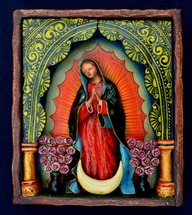
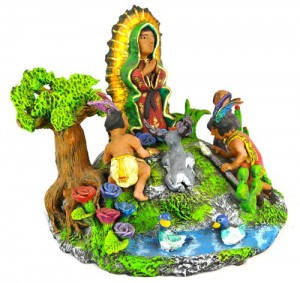

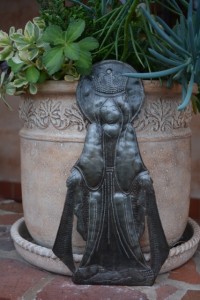
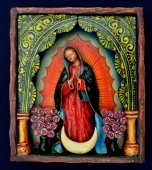

![BlackMadonna[1]](https://blog.itscactus.com/wp-content/uploads/2013/04/BlackMadonna1-201x300.jpg)
